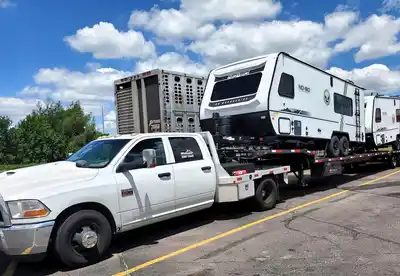In the intricate world of car shipping, every detail matters. From logistics to customer service, each element plays a pivotal role. Yet, amidst these complexities, one factor stands out: insurance. It’s not just a bureaucratic necessity; it’s the backbone of a secure and trustworthy operation. For industry insiders, insurance isn’t an afterthought—it’s a proactive measure, ensuring the smooth flow of high-value assets across continents.
Why Insurance is Crucial in Car Shipping
Protecting Valuable Assets
Cars aren’t mere commodities; they’re significant investments. For many, a vehicle represents years of savings. A single scratch or dent can translate to substantial financial losses. Did you know the average cost of a new car surpassed $40,000 in 2021? With such high stakes, insurance becomes indispensable, safeguarding against unexpected damages and financial pitfalls.
Mitigating Risks in Transit
Shipping a car isn’t a stroll in the park. The journey is fraught with potential hazards. From unpredictable weather patterns to highway accidents, the risks are manifold. In 2019, over 15,000 vehicles suffered damages during transit in the U.S. alone. Theft, too, remains a concern, especially for luxury vehicles. Insurance acts as a safety net, ensuring that even when the unexpected strikes, the financial repercussions are contained.
Building Trust with Customers
In business, trust is currency. For car shipping companies, a robust insurance policy isn’t just about risk mitigation—it’s a testament to their commitment. Clients seek assurance, knowing their prized assets are in safe hands. A comprehensive insurance policy speaks volumes, signaling professionalism and dedication. It’s a silent yet powerful tool, fostering trust and building long-lasting client relationships.
Types of Car Shipping Insurance
Navigating the labyrinth of car shipping insurance can be daunting for the uninitiated. However, for industry professionals, understanding the nuances is paramount. Let’s delve into the primary insurance types that fortify the car shipping realm.
Comprehensive Coverage
A titan in the insurance world, comprehensive coverage is the gold standard for many. It’s the all-encompassing shield, guarding against a myriad of potential mishaps. From vandalism to natural disasters, this coverage has your back. Interestingly, a study revealed that nearly 60% of shippers opt for this coverage, valuing its extensive protection. Whether it’s a hailstorm’s wrath or an unexpected theft, comprehensive coverage ensures that the vehicle’s owner isn’t left grappling with hefty bills.
Liability Coverage
Liability coverage is the industry’s bedrock. It’s not just an option; it’s a federal mandate for carriers. This coverage kicks in when the shipper is at fault. If a vehicle suffers damage due to the shipper’s negligence, liability coverage comes to the rescue. It’s worth noting that the U.S. Department of Transportation mandates a minimum of $750,000 in liability insurance for carriers. This requirement underscores the significance of this coverage, safeguarding clients from potential shipper mishaps.
Gap Coverage
The world of auto finance introduces us to gap coverage. Imagine this scenario: A brand-new car, fresh off the lot, gets totaled during transit. Traditional insurance might cover the current market value, but what about the outstanding loan amount? That’s where gap coverage shines. It bridges the “gap” between the car’s depreciated value and the remaining loan balance. A staggering 25% of car owners, within the first few months of purchase, owe more than their car’s worth. Gap coverage is their safety net, ensuring financial tranquility even in the face of adversity.
Factors Influencing Insurance Premiums
In the intricate tapestry of car shipping insurance, premiums aren’t arbitrary figures. They’re meticulously calculated, influenced by a medley of factors. Let’s dissect the primary determinants that sway these costs.
Value of the Vehicle
A vehicle’s value is a pivotal factor. High-end luxury cars command heftier premiums compared to their modest counterparts. It’s a simple risk-reward equation. Insuring a $100,000 sports car inherently carries more risk than a $20,000 sedan. An intriguing fact: luxury cars, representing just 10% of vehicles shipped, account for nearly 25% of total insurance claims by value.
Shipping Distance and Route
Distance isn’t just a matter of miles; it’s a risk multiplier. Longer journeys introduce more variables, from road conditions to potential hazards. Additionally, certain routes carry inherent risks. A coastal route prone to hurricanes will invariably attract higher premiums than a tranquil countryside path. It’s estimated that routes passing through high-risk zones can spike premiums by up to 15%.
Type of Shipping Service
The mode of transport plays a decisive role. Open transport, the industry’s workhorse, is cost-effective but exposes vehicles to the elements. In contrast, enclosed transport offers a protective cocoon, shielding cars from potential adversities. However, this added protection comes at a price. On average, enclosed transport can elevate insurance costs by approximately 50% compared to its open counterpart.
Tips for Consumers and Businesses
Navigating the car shipping insurance landscape requires astuteness, whether you’re a consumer or a business entity. Here are some tailored insights to ensure a seamless experience:
Reading the Fine Print
Insurance documents can be dense, brimming with industry jargon. Yet, they hold the key to understanding your coverage. A surprising 30% of claims disputes arise from misunderstandings. Always dissect policy documents, ensuring clarity on coverage limits, exclusions, and deductibles.
Verifying Shipper’s Insurance
Trust, but verify. Before entrusting your vehicle, ensure the shipper’s insurance is robust and valid. Industry insiders recommend requesting a copy of the shipper’s Certificate of Insurance. This document offers a snapshot of their coverage, ensuring they meet federal mandates.
Documenting Vehicle Condition
A picture speaks a thousand words. Before shipping, photograph your vehicle from multiple angles. These images serve as a baseline, invaluable if disputes arise. Industry data reveals that documented pre-shipment conditions reduce claim resolution times by nearly 40%.
Conclusion
Car shipping insurance isn’t a mere formality; it’s the linchpin of a secure, trust-filled transaction. For consumers and businesses alike, understanding its nuances is paramount. By arming oneself with knowledge and adopting a proactive approach, one can ensure that their prized assets journey safely, backed by the assurance of comprehensive coverage. In this dynamic industry, insurance remains the steadfast guardian, ensuring peace of mind amidst the complexities of transit.



